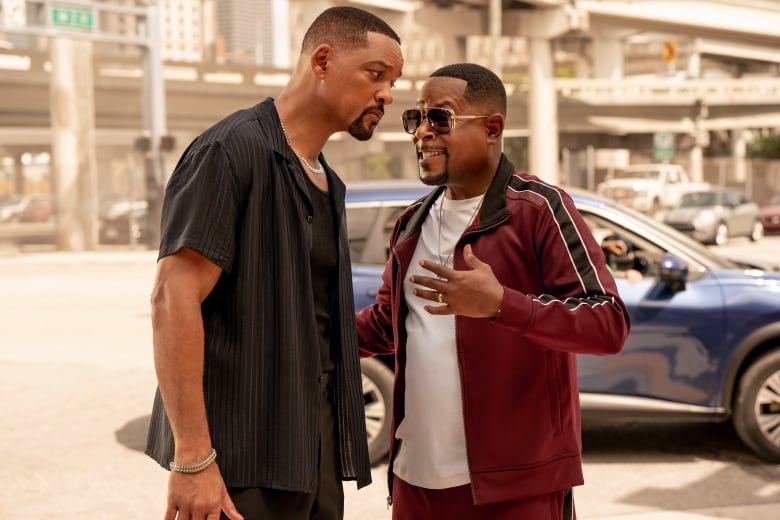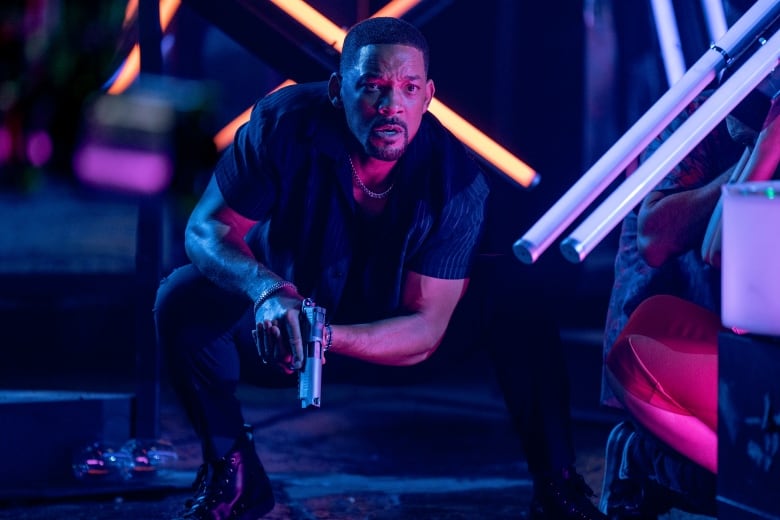
Heading into the theatre for Bad Boys: Ride or Die, I do not arrive unprepared.
Aside from virtually growing up alongside the buddy-cop movies, I come with something bordering on a mania: as a young, explosions-obsessed child in the early 2000s, I once spent a summer rewatching Bad Boys II. At final count, I think I ended a two week period having watched what is perhaps the best car chase in cinema history (and yes, I’ve seen Bullitt) in the greatest action sequel outside of Transporter 2 no less than 16 times.
So pulling up to the film’s third sequel, there is the distinct chance the majority of Bad Boys watched hours sit in my lap. Which could make me either particularly qualified — or particularly biased — in declaring that while Ride or Die is not the worst instalment in the series, it’s still compelling proof that the franchise should take the advice embedded in its own title.
And no, I don’t mean “ride.”
Its relative failure to live up to expectations is a surprising feat for a set of films that didn’t begin as anywhere near prestige and never angled themselves in that direction either. From its outset, the Will Smith, Martin Lawrence-led story of renegade Miami cops operating on the fringes of both the law and the bayou hasn’t been much more than an excuse to fill vans full of gasoline or throw speedboats at moving cars — with a screaming Michael Shannon locked inside.
WATCH | Bad Boys: Ride or Die trailer:
And their critical reception, at least starting out, reflected that.
Unlike virtually any other too-long-running mega franchise, the earliest Bad Boys instalments hold critical reviews far below the reboots. According to Rotten Tomatoes, the two Bilall Fallah and Adil El Arbi-directed late addition films (Bad Boys For Life and Ride or Die) have average freshness ratings two and three times higher than the originals.
So as a critic coming into the “When you popped me from behind” movies actually dead-set on loving them for the non-serious fun they’re supposed to offer, it’s surprising to still be in the minority. After falling in love with these films that were widely panned for a lack of nuance and depth, seeing a flock of reviewers now fawning over what amounts to made-for-tv schlock boggles the mind.
I guess, to quote another over-milked media property, I feel like I’m taking crazy pills.

Formulaic plot
After the debacle that was Martin Lawrence’s sleepwalking performance in For Life though, Ride or Die can at least be called an improvement.
Still somehow employed by the Miami police department, our partners-in-law Mike Lowrey (Will Smith) and Marcus Burnett (Martin Lawrence) are getting up there in years.
Attending each other’s weddings and family functions, they reminisce about shared memories with a bargain bin full of ancillary characters — whose presence and later reintroductions need to be explained away with at least a bit of awkward early exposition.
But after a robbery here and shootout there, the boys are quickly embroiled in that staple of the law enforcement entertainment genre — a conspiracy that goes all the way to the top, casting them as renegade vigilantes forced to clear their own names while being hunted by their own agency.
There’s nothing inherently wrong with following genre formulas, and this one is an action favourite for a reason: just as how virtually every young adult novel casts its hero as an orphan to explain away why a parent doesn’t simply step in to save them, late-stage law enforcement series from Mission Impossible, to Die Hard, Fast and Furious, James Bond, and even Indiana Jones need to shake things by removing the supercop infrastructure from the super cops they’ve created.
But instead of a lighthearted-but-charming revisit, Ride or Die feels like the reanimated corpse of a reanimated corpse that’s been thrown face first through a focus group boardroom.
Not only does the now soap-operatic franchise crumble under the weight of its many characters, most of them are barely given the time of the day. This film’s villain, Eric Dane’s McGrath, shows up so infrequently you’d think they wrote the script to make sure he didn’t have to spend more than a weekend filming, despite ostensibly being the fulcrum upon which the entire plot sits.
Meanwhile, Lowry’s son Armando stumbles in midway through to juggle the dual duties of overcomplicating the plot, and once again acting as a retconned character-enhancer for his increasingly one-dimensional father.

Cameos and callbacks
At the same time, a veritable rogue’s gallery of cameos and callbacks litter the two hour runtime — most notably Joe Pantoliano’s Captain Howard. (Wasn’t he killed off?) But while his resurrected character at least drops back in to influence the story, the rest are here more to elicit the same response as Leo DiCaprio pointing-at-the-screen in Once Upon a Time… In Hollywood.
Throughout, everyone from DJ Khaled, to Tiffany Haddish, to John Salley’s callback character Fletcher pop up for a nostalgia-inducing “did you see that?!” second here or there.
In one 30-second sequence, we even whip between blink-and-you’ll-miss it shots of Michael Bay and TikTok superstar Khaby Lame — a demographically-strained pairing that will leave all but the most chronically online entertainment journalists scratching their heads over one of those faces.
But as pandering as it is, these moments are the gas on the fire that makes Ride or Die at least partially worth sitting through.
The occasional inventive camera work and charisma of both Lawrence and Smith bump up the watchability as well — since its outset, Lawrence’s neurotic, high-strung complaints played against Smith’s cool-guy straight man have never failed to draw a chuckle.
And if nothing else, the long-awaited arc of Marcus’ son-in-law Reggie — going from a cowed, stuttering teenager to Rambo level super-soldier — will draw more than a few cheers.
But those few fresh moments really only work to highlight how much of this product has gone rotten.
All action, no story
After Lawrence battled through years of personal mental and physical health breakdowns only to arrive at Bad Boys For Life too tired to fully inhabit the character, he has been flanderized — the phenomenon named for Ned Flanders whereby characters increasingly become overemphasized caricatures of themselves — to the point of being unrecognizable.
Perhaps it was someone learning the wrong things from Bad Boys II’s drugged Marcus ridiculously trying to drink from a fish tank, but instead of a tightly wound but grounded foil to Mike’s suave hot shot, he is now a literally insane man who talks about donkey ghosts, walks through traffic believing he’s invincible and attempts to hug live crocodiles.
In fact, every aspect of Ride or Die operates like a gaudy hyper emphasized version of its predecessors — a collage of the best parts of action movies with none of the connective tissue to earn them.
And unlike in silly self-deprecating examples like Fast and Furious or even Riverdale — where the late stage ridiculousness at least seem self-aware — Bad Boys: Ride or Die reads like a fan film that lacks respect for even simple story, or its audience.
From its stereotypical former-renegade-settling-down-in-marriage opening, to its stereotypical alls-well-that-ends-well barbecue ending, it feels like a somehow more commercialized version of the already ultra-commercialized oeuvre of Michael Bay.
And for that, I can’t forgive it.